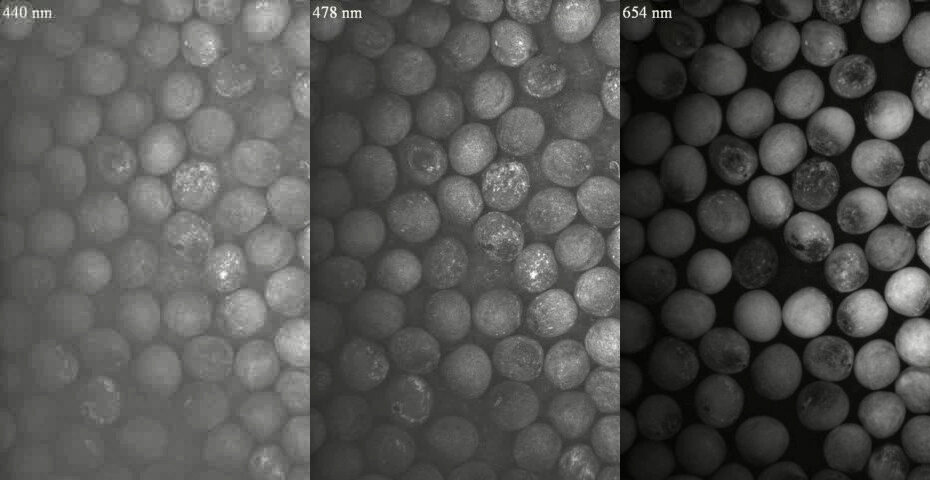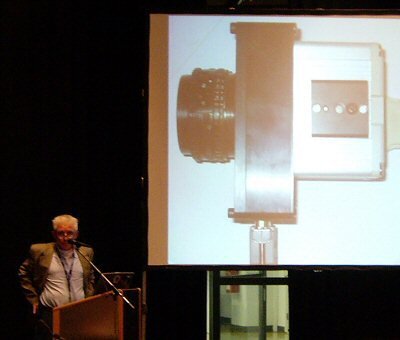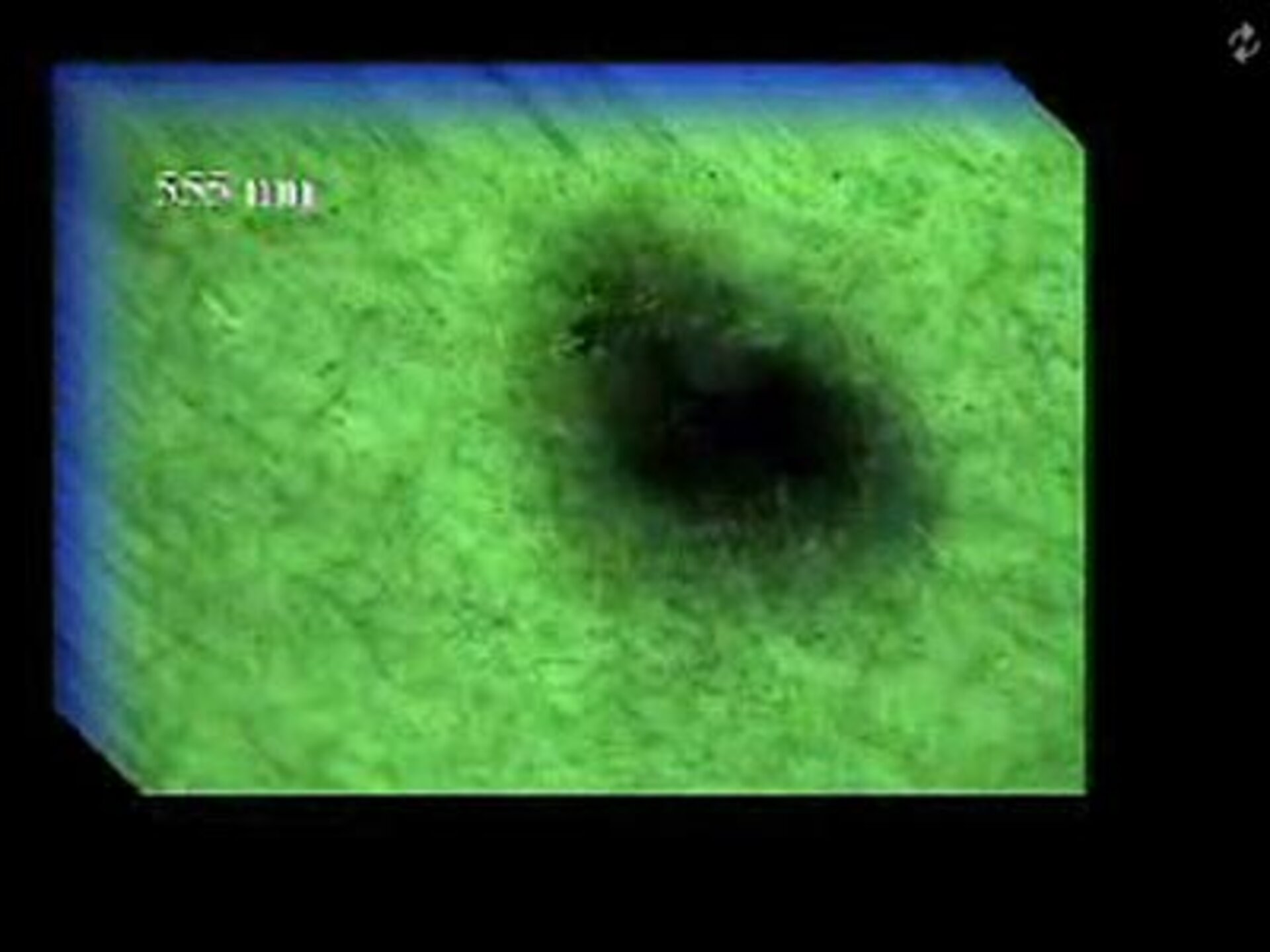“Spring in spectral imaging”, an exploration of new applications for spectral imaging
A one-day seminar recently presented the exciting business opportunities offered by novel applications of spectral imaging technology. This technology, developed chiefly for Earth observation systems in space, is now being applied by the start-up company Space Colour Systems in a number of different fields that focus on the production and commercialisation of spectral filters, cameras and derived products.
The seminar “Spring in Spectral Imaging” took place at ESA’s Business Incubation Facility 21 March 2007 at the European Space Research and Technology Centre (ESTEC) in Noordwijk, the Netherlands. The event was held by Dirk van Toledo, President of Space Colour System, a company incubated at ESA’s business incubator in ESTEC.
The technology is incorporated in Space Colour Systems’ ProductDefiner system, which can be used for quality control for any product which has standards of colour, shape or size.
Representatives of the medical, agriculture and metallurgy sectors attended the seminar enabling an exchange of ideas between representatives of these sectors and the space sector about possible future technical improvements and new applications for spectral imaging.
Advantages of small space sensors

Johan Leijtens from TNO, a Dutch institute for technological research, collaborates with the space industry by providing small sensors and technical instruments for space applications, opened the event with a presentation entitled “In a world where size does matter, small is beautiful”. He described the use of spectrometers and both their advantages over filter techniques in terms of susceptibility to light pollution and their disadvantages in terms of lack of precision due to the wide range of wavelengths.
Future applications for spectrometers in satellites and UAVs (Unmanned Aerial Vehicles) were also explored and his presentation concluded with the hope that one day it would be possible to have systems small enough to allow several measurement devices together on one satellite.
Land use and forest fire monitoring from space
Koen Meuleman from VITO, a Flemish institute for technological research, presented ways in which satellite observations can be used on Earth. The APEX (Airborne Prism Experiment) Imaging Spectrometer is a Belgian-Swiss project dedicated to Earth observation, in particular the study of land surface processes. A number of applications were presented including: water vapour monitoring, land use monitoring and detection of forest fires.
Developments in technology for space applications were presented by Erik Laan of Dutch Space, a company working on instruments for an ESA mission to Mars. Laan focused on SPEX, an improved version of the ozone monitoring instrument that has already been used in Earth observation to measure the ozone concentration. Many improvements have been made, including the use of more modern sensors, and SPEX will be used during the Mars expedition to analyse dust in Mars’ atmosphere.

Gerrit Polder from Wageningen University in the Netherlands described the use of spectral imaging for food and agriculture. Image analysis or machine vision has successfully been applied in agricultural applications for more than 20 years. The first applications made use of monochrome grey value cameras but then a couple of years later colour cameras were introduced.
The filters used in a colour camera are designed to match, as much as possible, the sensitivity of the human eye in order to produce colour images suitable for human interpretation. From spectroscopy it is known that biochemicals can be identified from their absorption of specific wavelengths. With spectral imaging, images can be acquired in up to 300 wavelength bands with bandwidths which can be smaller than 1 nanometre, making it possible to apply spectroscopic techniques on these images.
Applications researched include measuring the spatial distribution of biochemicals in food, detection of diseases in seed, predicting the yield of crops in agricultural fields and detecting autumn leaves on rail tracks. Since these cameras are often used in real-time applications, advanced computer algorithms and chemometric techniques have been developed.
Spectral imaging for medical diagnosis

Ruud Verdaasdonk, from the University of Utrecht Medical Centre, also explored the use of spectral imaging in new areas by illustrating the ways in which it can support patient diagnosis and monitoring as it allows the observation of phenomena invisible with the naked eye.
He also highlighted the technical challenges of using the technology. One problem is the motion of artefacts during data acquisition; this was also identified as a potential problem in the application of the technology for detection of defects in coating on steel. Frenk van den Berg, from Corus steel, explained how spectral imaging could be used to improve current quality management tools. Further problems identified were the width of the sheets making it compulsory to use several cameras in parallel and the speed of the production chain which limits the time a sheet passes under the cameras.
Discussions during the workshop highlighted two key trends for spectral imaging technology: the trend for small-sized components and the need for a ‘killer’ application to enhance research and promote the adoption of the new technology.
For further information on the seminar please contact Dirk van Toledo, Space Colour System, at dirkvt @ planet.nl.
ESA’s Business Incubation supports entrepreneurs and start-up companies

This event is just one example of the support that can be provided through ESA Business Incubation through providing facilities for such seminars.
The European Space Agency and its Business Incubation centre seek entrepreneurs with innovative ideas for using space technology, and services in a non-space commercial environment. ESA’s Business Incubator can assist start-up companies by providing assistance from its technical experts and support for business development.




